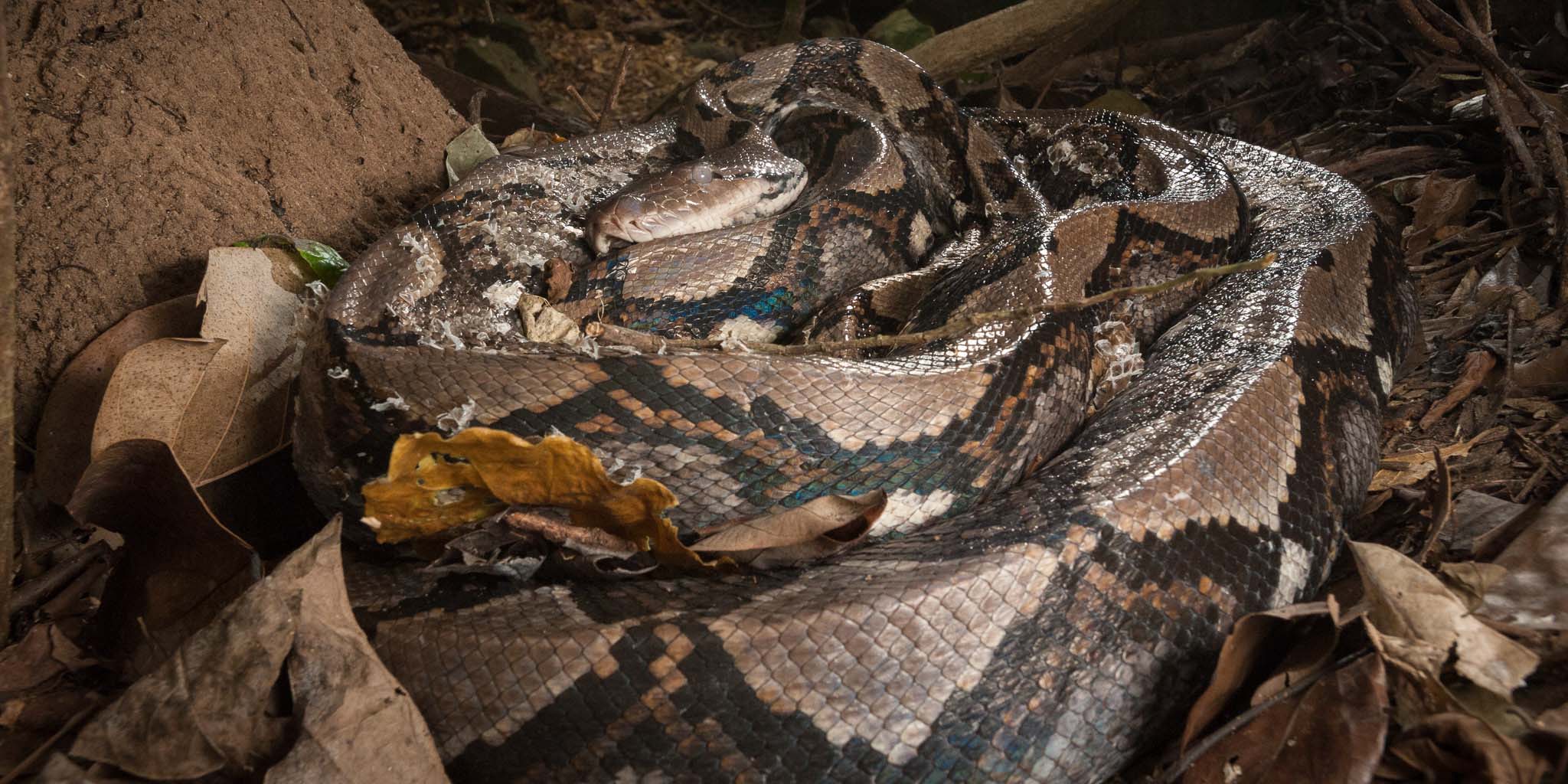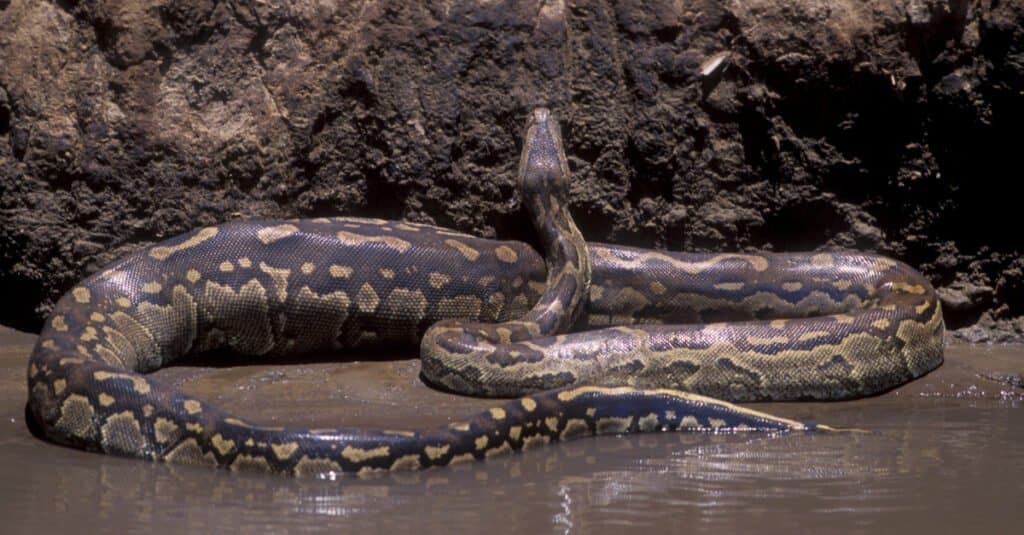The 10 Biggest Snakes in the World
The 10 Biggest Snakes in the World ( List of largest snakes) – Snakes are one of the most varied groups of reptiles on the planet. Although the majority of snakes exhibit a moderate size range, the exceptions are remarkable. Species vary in size from little, thread-like snakes measuring about 4 inches (10 cm) in length to colossal pythons exceeding 30 feet (9 meters).
What Causes Certain Snakes to Attain Significant Size?
The dimensions of snakes are influenced by a confluence of evolutionary, environmental, and biological variables. Access to sustenance, habitat availability, and thermal regulation are fundamental constraints on snake size.
Significant body size in snakes provides many evolutionary benefits. Smaller serpents depend on diminutive prey such as insects or small rodents, hence inherently restricting their growth. Larger snakes are more effective predators, capable of capturing and subduing bigger prey, which supplies the requisite caloric intake to maintain their size. Their bulk serves as a deterrence to prospective predators. Nonetheless, attaining such dimensions necessitates a meticulous equilibrium—gigantic serpents must have access to dependable food sources and adequate habitat to fulfill their requirements.
In tropical climates, warm and stable temperatures facilitate ectothermic metabolism. This enables them to devote more energy to development instead of thermoregulation. Moreover, these habitats present less physical constraints, allowing certain snake species to attain remarkable lengths and weights. Giant serpents are primarily located in resource-abundant, low-competition habitats.
List of largest snakes in the World
1. Reticulated Python (Malayopython reticulatus)
 The reticulated python, native to Southeast Asia, is recognized as the world’s longest snake, attaining lengths exceeding 30 feet (9 meters). These pythons possess a slim, muscular physique adorned with a reticulated pattern—a sophisticated arrangement of tan, brown, and black scales that facilitates their camouflage within forest habitats. Although often located in rainforests, they exhibit adaptability to riverine environments and even anthropogenic regions. Renowned for their ambush predation, reticulated pythons employ their formidable musculature to choke and asphyxiate prey, frequently selecting targets as substantial as deer and wild boar. Recent sightings near villages have raised concerns because to their capacity to pursue animals of comparable size to humans.
The reticulated python, native to Southeast Asia, is recognized as the world’s longest snake, attaining lengths exceeding 30 feet (9 meters). These pythons possess a slim, muscular physique adorned with a reticulated pattern—a sophisticated arrangement of tan, brown, and black scales that facilitates their camouflage within forest habitats. Although often located in rainforests, they exhibit adaptability to riverine environments and even anthropogenic regions. Renowned for their ambush predation, reticulated pythons employ their formidable musculature to choke and asphyxiate prey, frequently selecting targets as substantial as deer and wild boar. Recent sightings near villages have raised concerns because to their capacity to pursue animals of comparable size to humans.
The contemporary world record for the largest snake is held by a reticulated python (Malayopython reticulatus) named “Medusa.” Medusa was officially measured in 2011, recording a length of 25 feet 2 inches (7.67 meters) and an approximate weight of 350 pounds (159 kilograms).
In 2016, construction workers in Paya Terubong, Penang, Malaysia, encountered a reticulated python of 26 feet (7.9 meters) in length, perhaps exceeding the prior record established by Medusa. The snake was estimated to weigh approximately 550 pounds (250 kg). The Malaysian python was regrettably neither officially measured nor comprehensively validated as a world record. It perished four days subsequent to its arrest.
2. Green Anaconda (Eunectes murinus)
 The green anaconda, indigenous to the wetlands and rivers of South America, is the biggest snake, with adults frequently surpassing 550 pounds (250 kilograms) and reaching lengths of up to 30 feet (9 meters). In contrast to pythons, which favor terrestrial environments, these anacondas are predominantly aquatic and depend on stealth, frequently remaining submerged along the water’s edge to ambush unsuspecting prey. Renowned for preying on large creatures such as caimans, capybaras, and occasionally jaguars, they constrict their coils firmly around the prey, asphyxiating it prior to ingestion. Notwithstanding its size and strength, the green anaconda often evades human engagement, with the majority of encounters taking place in the dark jungles of the Amazon.
The green anaconda, indigenous to the wetlands and rivers of South America, is the biggest snake, with adults frequently surpassing 550 pounds (250 kilograms) and reaching lengths of up to 30 feet (9 meters). In contrast to pythons, which favor terrestrial environments, these anacondas are predominantly aquatic and depend on stealth, frequently remaining submerged along the water’s edge to ambush unsuspecting prey. Renowned for preying on large creatures such as caimans, capybaras, and occasionally jaguars, they constrict their coils firmly around the prey, asphyxiating it prior to ingestion. Notwithstanding its size and strength, the green anaconda often evades human engagement, with the majority of encounters taking place in the dark jungles of the Amazon.
3. Burmese Python (Python bivittatus)
 The Burmese python is among the largest snakes in Asia, attaining lengths of around 23 feet (7 meters) and weighing nearly 200 pounds (90 kilograms). This snake, characterized by striking brown and tan colors, resides in woods, marshes, and riverbanks throughout Southeast Asia. As formidable constrictors, they hunt mammals and birds, encircling them until respiration ceases. In areas such as Florida, where they are an invasive species, Burmese pythons have significantly affected local biodiversity by preying on native animals that possess no defenses against these substantial, non-native predators.
The Burmese python is among the largest snakes in Asia, attaining lengths of around 23 feet (7 meters) and weighing nearly 200 pounds (90 kilograms). This snake, characterized by striking brown and tan colors, resides in woods, marshes, and riverbanks throughout Southeast Asia. As formidable constrictors, they hunt mammals and birds, encircling them until respiration ceases. In areas such as Florida, where they are an invasive species, Burmese pythons have significantly affected local biodiversity by preying on native animals that possess no defenses against these substantial, non-native predators.
4. African Rock Python (Python sebae)
 The African rock python is the largest snake in Africa, with lengths above 20 feet (6 meters) and weights exceeding 200 pounds (90 kilograms). Characterized by its robust physique and unique yellow, brown, and black markings, it inhabits savannas, woods, and rocky terrains throughout sub-Saharan Africa. Renowned for their ferocity, these pythons are proficient hunters, preying on tiny antelope, birds, and even crocodiles. African rock pythons, though generally cautious of humans, exhibit a protective disposition when challenged or cornered.
The African rock python is the largest snake in Africa, with lengths above 20 feet (6 meters) and weights exceeding 200 pounds (90 kilograms). Characterized by its robust physique and unique yellow, brown, and black markings, it inhabits savannas, woods, and rocky terrains throughout sub-Saharan Africa. Renowned for their ferocity, these pythons are proficient hunters, preying on tiny antelope, birds, and even crocodiles. African rock pythons, though generally cautious of humans, exhibit a protective disposition when challenged or cornered.
5. Indian Python (Python molurus)
The Indian python, akin to the Burmese python, attains lengths of approximately 20 feet (6 meters) and weights as much as 150 pounds (68 kilograms). Distributed over the Indian subcontinent, these pythons reside in forests, grasslands, and marshes. Their unique light and dark brown pattern offers great camouflage, facilitating the ambush of prey such as rodents, birds, and occasionally deer. The Indian python is esteemed in local traditions, often regarded as a symbol of resilience and power. Notwithstanding their size, these pythons are frequently peaceful in the presence of humans.
6. Amethystine Python (Simalia amethistina)
The Amethystine python, sometimes referred to as the scrub python, is indigenous to Indonesia, Papua New Guinea, and Australia, generally attaining lengths of up to 20 feet (6 meters). Typically, they are approximately 16 feet (4.9 meters) in length, with a glossy, iridescent sheen on their scales that imparts a stunning appearance. These pythons reside in rainforests and arboreal environments, demonstrating exceptional climbing abilities. They prey on birds, bats, and small mammals, executing swift strikes from tree branches or dense vegetation.
7. Boa Constrictor (Boa constrictor)
Despite being smaller than the leading competitors, the boa constrictor attains remarkable lengths of approximately 13 feet (4 meters) and can weigh as much as 100 pounds (45 kilograms). Distributed in Central and South America, they inhabit diverse environments, such as forests, savannas, and agricultural areas. Boas employ camouflage to assimilate into their surroundings, exhibiting diverse patterns in color and design, which enables them to conceal themselves adeptly from both predators and prey. Renowned for their efficacy as constrictors, they prey on diminutive creatures such as avians and rodents, ensnaring them with an accurate stroke and subsequently constricting to incapacitate.
8. Yellow Anaconda (Eunectes notaeus)
The yellow anaconda, a near relative of the green anaconda, attains lengths of roughly 13 feet (4 meters) and weighs around 120 pounds (54 kilograms). This serpent is indigenous to Paraguay, Uruguay, and Bolivia, residing in marshes, rivers, and swamps. Its yellow-green hue, adorned with black dots and patches, facilitates its camouflage in turbid water. In contrast to its larger relative, the yellow anaconda possesses a more limited diet, largely consuming birds, fish, and small mammals.
9. King Cobra (Ophiophagus hannah)
The king cobra is the longest venomous snake globally, with adults frequently attaining lengths of 18 feet (5.5 meters). This snake, located in the woods of Southeast Asia and the Indian subcontinent, exhibits an olive-brown hue and possesses a prominent hood that it elevates as a threat display. In contrast to the majority of large serpents, the king cobra mostly hunts other snakes, especially venomous varieties, exhibiting distinctive predatory behavior. The king cobra is renowned for its deadly venom, capable of administering substantial quantities in a single bite, with toxicity sufficient to lethally affect an elephant. Despite its lethal characteristics, it is often cautious of humans, employing its hooded display to intimidate rather than assault.
10. Black Mamba (Dendroaspis polylepis)
The black mamba, the longest venomous snake in Africa, can reach lengths of up to 14 feet (4.3 meters). Despite being very slim among large snakes, it is recognized for its agility and speed, attaining velocities of up to 12 miles per hour (19 km/h). The black mamba, named after the dark coloration within its mouth, occupies a range of habitats including savannas and woods, largely preying on small mammals and birds. Its neurotoxic venom, which can induce death within hours, renders it one of the most dreaded snakes in Africa.
Titanoboa: The Largest Snake to Have Ever Existed
Titanoboa cerrejonensis is the longest snake ever recorded, attaining lengths of over 42 feet (13 meters) and weighing in excess of 2,500 pounds (1,135 kilograms). This dimension renders it not only the largest snake ever documented but also one of the most formidable terrestrial predators of its day. Unearthed in Colombia’s Cerrejón coal mines, this colossal constrictor existed around 60 million years ago in a warm, humid tropical habitat akin to the contemporary Amazon Basin.
Titanoboa was a constrictor, akin to contemporary boas and anacondas, employing its enormous size to encircle and asphyxiate its prey. Titanoboa, being an apex predator, mostly consumed enormous fish, crocodilians, and other substantial reptiles, asserting dominance in its swampy, riverine habitat.
















